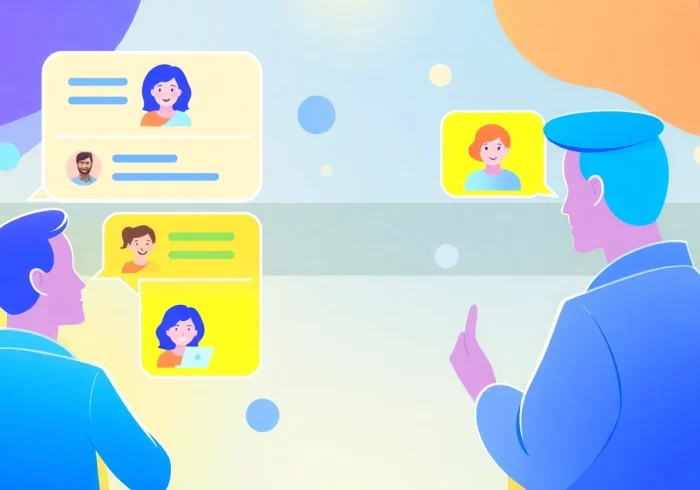Understanding Communication in Relationships
Effective communication is the backbone of any healthy relationship. Whether it be romantic partnerships, friendships, or familial ties, the way we convey our thoughts, listen, and respond greatly shapes the quality of our connections. Good communication aids in building trust, resolving conflicts, and enhancing intimacy. As we delve into the intricacies of communication in relationships, it becomes crucial to understand its importance and the potential barriers that may arise.
Importance of Effective Communication
At its core, effective communication fosters understanding and ensures both partners feel heard and valued. Open dialogue promotes emotional closeness, allowing partners to share their vulnerabilities, dreams, and concerns. Studies consistently show that couples who communicate effectively are less likely to experience misunderstandings and are better equipped to navigate the challenges inherent in relationships.
Moreover, effective communication contributes to emotional intelligence, fostering a deeper awareness of both one’s own feelings and those of the partner. This dynamic not only leads to better conflict resolution but also enhances overall relationship satisfaction.
Common Barriers to Communication
While the importance of effective communication is clear, various barriers can obstruct this vital process:
- Assumptions: Many individuals may assume their partner knows what they are feeling or thinking, which can lead to frustration and misunderstanding.
- Emotional Barriers: Fear of being vulnerable or facing rejection can inhibit open dialogue, causing partners to withhold their true feelings.
- Distractions: In our modern, fast-paced lives, distractions such as digital devices can detract from meaningful conversations, leading to superficial interactions.
- Conflict Avoidance: Some people may avoid difficult conversations altogether, fearing arguments or hurt feelings, thereby causing unresolved tension.
Identifying Communication Styles
Understanding different communication styles is paramount for effective engagement. Typically, communication styles can be categorized into:
- Assertive: This style involves expressing thoughts and feelings openly and honestly while respecting the rights of others.
- Passive: Individuals who employ a passive communication style tend to avoid expressing their feelings, which can lead to dissatisfaction and misunderstandings.
- Aggressive: An aggressive style often involves dominating conversations and expressing feelings in a confrontational manner, creating fear or resentment.
- Passive-Aggressive: This style is characterized by indirect resistance or sarcasm, making it difficult to address issues directly.
By identifying personal communication styles, partners can learn to adjust their approaches, paving the way for more effective exchanges.
Key Components of Healthy Communication
Active Listening Techniques
Active listening is more than just hearing words; it involves engaging with the speaker both verbally and non-verbally. Here are some techniques to improve active listening:
- Reflective Listening: Paraphrase what your partner says to show understanding and encourage them to clarify if needed.
- Maintain Eye Contact: This conveys attentiveness and can help the speaker feel appreciated and understood.
- Avoid Interrupting: Allow your partner to finish speaking before responding, fostering a deeper understanding of the message.
Expressing Needs and Feelings
Expressing one’s needs and feelings is pivotal to fostering intimacy and understanding. To do this effectively, consider the following approaches:
- Be Clear and Concise: Use specific language to express your thoughts. Avoid vague terms that may lead to confusion.
- Use Personal Pronouns: Speaking from your own perspective (e.g., “I feel…” instead of “You always…”) can reduce defensiveness from the listener.
Nonverbal Communication Cues
Nonverbal communication plays a substantial role in conveying emotions and attitudes. Key gestures and expressions to be mindful of include:
- Facial Expressions: Smiles, frowns, and other expressions can convey emotions more powerfully than words.
- Body Language: Open gesturing can signify engagement, while crossed arms may present defensiveness.
- Physical Affection: Simple gestures such as holding hands or a gentle touch can reinforce intimacy and connection.
Practical Tips to Improve Communication in Relationships
Using “I” Statements for Clarity
Shifting language to include more “I” statements helps in expressing feelings without placing blame. For instance, instead of saying, “You never listen,” try, “I feel unheard when we don’t discuss this.” This approach fosters a more constructive dialogue.
Establishing Regular Check-ins
Setting aside time for regular check-ins can significantly enhance communication. During these sessions, partners can discuss their feelings, needs, and any potential issues in a low-pressure environment. Consider utilizing a structured format to ensure both partners feel equally heard.
Encouraging Open-Ended Questions
Utilizing open-ended questions invites deeper conversations and insights. For example, instead of asking, “Did you have a good day?” try, “What was the best part of your day?” This method enables partners to express themselves freely and share their experiences more fully.
Addressing Conflict Through Communication
Dealing with Misunderstandings
Misunderstandings are inevitable in any relationship, but how partners address these instances can define the relationship’s trajectory. It’s essential to approach misunderstandings with an open mind and a willingness to listen and learn. Some strategies include:
- Clarification: Engage in dialogue aimed at understanding each other’s perspectives rather than assigning blame.
- Time-outs: If emotions run high, taking a brief pause can prevent escalation and allow time for reflection.
Strategies for Constructive Conflict Resolution
Healthy conflict resolution starts with constructive communication. Here are several strategies for approaching conflicts:
- Stay on Topic: Avoid bringing up past grievances; focus on the current issue to prevent overwhelming discussions.
- Collaborate on Solutions: Work together to identify solutions that satisfy both partners, reinforcing teamwork.
Finding Common Ground
It’s crucial for couples to seek common ground when conflicts arise. This may require flexibility, compromise, and understanding from both individuals. Emphasizing shared goals and values can strengthen the relationship, turning challenges into avenues for growth.
Long-term Benefits of Strong Communication in Relationships
Building Trust and Intimacy
Strong communication lays the groundwork for trust and intimacy. When partners feel they can share anything without fear of judgment, their emotional connection deepens significantly. Trust is a direct byproduct of consistent, honest communication.
Enhancing Relationship Satisfaction
Couples who communicate effectively generally report higher relationship satisfaction. They are better equipped to handle difficulties, resulting in greater overall happiness and fulfillment in their partnership.
Creating a Supportive Partnership
A relationship founded on healthy communication becomes a supportive partnership, where both individuals thrive. Such an environment encourages personal growth, emotional development, and teamwork, ultimately benefiting both partners.



